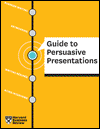When IBM recently polled 1500 CEOs across 60 countries, they rated creativity as the most important leadership competency.
Eighty percent of the CEOs said the business environment is growing so complex that it literally demands new ways of thinking. Less than 50 percent said they believed their organizations were equipped to deal effectively with this rising complexity.
But are CEOs and senior leaders really willing to make the transformational moves necessary to foster cultures of real creativity and innovation?
Here are the six fundamental moves we believe they must make. In all my travels, I've not yet come across a single company that systematically does even the majority of them, much less every one.
- Meet People's Needs. Recognize that questioning orthodoxy and convention — the key to creativity — begins with questioning the way people are expected to work. How well are their core needs — physical, emotional, mental, and spiritual — being met in the workplace? The more people are preoccupied by unmet needs, the less energy and engagement they bring to their work. Begin by asking employees, one at a time, what they need to perform at their best. Next, define what success looks like and hold people accountable to specific metrics, but as much as possible, let them design their days as they see fit to achieve those outcomes.
- Teach Creativity Systematically. It isn't magical and it can be developed. There are five well-defined, widely accepted stages of creative thinking: first insight, saturation, incubation, illumination, and verification. They don't always unfold predictably, but they do provide a roadmap for enlisting the whole brain, moving back and forth between analytic, deductive left hemisphere thinking, and more pattern-seeking, big-picture, right hemisphere thinking. The best description of the stages I've come across is in Betty Edward's book Drawing on the Artist Within. The best understanding of the role of the right hemisphere, and how to cultivate it, is in Edwards' first book, Drawing on the Right Side of the Brain.
- Nurture Passion. The quickest way to kill creativity is to put people in roles that don't excite their imagination. This begins at an early age. Kids who are encouraged to follow their passion develop better discipline, deeper knowledge, and are more persevering and more resilient in the face of setbacks. Look for small ways to give employees, at every level, the opportunity and encouragement to follow their interests and express their unique talents.
- Make the Work Matter. Human beings are meaning-making animals. Money pays the bills but it's a thin source of meaning. We feel better about ourselves when we we're making a positive contribution to something beyond ourselves. To feel truly motivated, we have to believe what we're doing really matters. When leaders can define a compelling mission that transcends each individual's self-interest, it's a source of fuel not just for higher performance, but also for thinking more creatively about how to overcome obstacles and generate new solutions.
- Provide the Time. Creative thinking requires relatively open-ended, uninterrupted time, free of pressure for immediate answers and instant solutions. Time is a scarce, overburdened commodity in organizations that live by the ethic of "more, bigger, faster." Ironically, the best way to insure that innovation gets attention is to schedule sacrosanct time for it, on a regular basis.
- Value Renewal. Human beings are not meant to operate continuously the way computers do. We're designed to expend energy for relatively short periods of time — no more than 90 minutes — and then recover. The third stage of the creative process, incubation, occurs when we step away from a problem we're trying to solve and let our unconscious work on it. It's effective to go on a walk, or listen to music, or quiet the mind by meditating, or even take a drive. Movement — especially exercise that raises the heart rate — is another powerful way to induce the sort of shift in consciousness in which creative breakthroughs spontaneously arise.
These activities are only possible in a workplace that doesn't overvalue face time and undervalue the power of renewal.
Tony Schwartz is president and CEO of The Energy Project. He is the author of the June, 2010 HBR article, "The Productivity Paradox: How Sony Pictures Gets More Out of People by Demanding Less," and coauthor, with Catherine McCarthy, of the 2007 HBR article, "Manage Your Energy, Not Your Time." Tony is also the author of the new book "The Way We're Working Isn't Working: The Four Forgotten Needs that Energize Great Performance" (Free Press, 2010).










